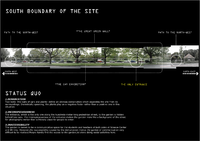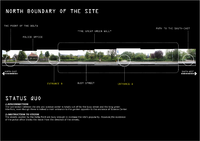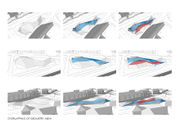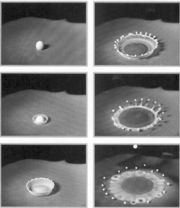atom07:Research
(→Site Qualities) |
|||
| Line 82: | Line 82: | ||
| − | [[Image:GPS_Analysis2.jpg|thumb|GPRS | + | [[Image:GPS_Analysis2.jpg|thumb|Overlapping Mesh from GPRS]] |
| + | |||
| + | |||
| + | |||
| + | |||
| + | |||
| + | |||
| + | |||
| + | |||
| + | |||
| + | |||
| + | |||
| + | |||
| + | |||
| + | |||
| + | |||
| + | |||
| + | |||
| + | |||
| + | |||
| + | |||
| + | |||
| + | |||
| + | |||
| + | |||
| + | |||
| + | |||
| + | |||
| + | |||
| + | |||
| + | |||
| + | |||
| + | |||
| + | |||
| + | |||
| + | |||
| + | |||
| + | |||
| + | |||
| + | |||
| + | |||
| + | |||
| + | |||
| + | |||
='''Input > Output Actors <'''= | ='''Input > Output Actors <'''= | ||
Revision as of 10:42, 11 October 2011
Contents |
Site Qualities
The site is an enclave in the campus. With it's own identity and bad connections to other campus elements the park is unable to indulge in to the active life around it. Surrounded by roads and disconnected by a wall of greenery the park isn't a inviting place.
On the inside the park has some good quality's. It has diverse vegetation, a nice view of open space and surrounding buildings and a good solar entrance. However, the most disruptive influences are sound, poor maintenance and the empty feeling.
(we should put pictures here)
Another way of making an research is with the kevin lynch method. Explain what we concluded from this research and add images.
Additional Information on Site Qualities
Add GPS mappings + Map Analysis
Input > Output Actors <
Distinguished from the traditional designing methodology in which architects will dominate every part of the whole designing process by applying the up-down styling intervention and previous experiences, we try to apply a bottom-up design method to build up a connection between the building and the actors in which the persistent information input and output will be available.In brief, actors could input their own information and desires of different programs to our building, our building will output relevant data and possiblilities to them to meet their demands. The actors will have the ability to give feedback to the building again.As a result,an active loop of information exchange and interactivity between building and actors will be generated in the design strategy.
"The web of relationships in the index of the language allows for many different paths through the design process. This simplifies the designer's life, because the design process can start from any part of the problem that the designer understands, and work toward the unknown parts. At the same time, if the pattern language has worked well for many projects, there is reason to believe that even though the designer may not completely understand the design problems at first, the process will complete, and the resulting design will be usable."[1]
There is no single actor but a multitude of parameters and users. The design will work with multiple actors.
Client
Our site analysis did not indicate a strong desire for investment from clients which we pursued. We propose to have our own start up business. The TU Delft career centre helps students with a business plan for multiple actors, we realised that there might be the need for multiple clients. That is why we decided to start our business, so that we can have a direct relationship with the actors on site.
Funding will be provided by Venture Capitalist wanting to invest in new and exciting projects. This will cover the initial start up capital needed for the project. Maintenance costs will be covered by income when the site is used for large functions by companies or individual who want to use the site as an exhibition space.
Experts
Specialist will aid the design and construction process. We have identified 4 fields of specialization:
TU Delft Landscaping Department - Will assist in how to create a flourishing space
Gallery Owner - In de Kunst
Ergonomics of Structure - Industrial Designer, Andre Taris
Hardware- Construction and fabrication methods
Software- Grasshopper + Rhino Support ; Roxana Palfi (still to confirm) ; Arduino + Firefly : Online Forums
Business Strategies- Yes Delft, Delft Design
Experts
- An expert on the possibillities to let elements move.
- An expert on the materials, how do people relate and interact with different materials
- Landscape/public space expert, when do people enter and use a public space
- Gallery owner to look in to the needs of a gallery
- Artist,to look in to the needs of a gallery
- Software experts
- Students what do they need to be atracted
- Locals what do they need to be atracted
- Science centre, what do they need to use the intervention
- YES Delft, about starting a business and writing a plan
- TOP Delft, about how to attract people and make money out of it
- Delft design, about how to attract people and make money out of it
Experiment
In this experiment we tried how interactive an element set up can be. In the orange lecture hall we made several set ups which the users were able to addapt to their own demands. the different set ups we tried were:
- The open set up like it always is. People can only sit next each other.
- A diverse set up with different ways to group the benches, the different distances between the opposing benches were tested here.
- A complete random set up with all elements spread through the area.
- A obstructive set up, here people are not provided with a logical seating place.
- A uncomfortable set up, we only used the wooden blocks and moved the chairs to the side.
conclusions:
- People are willing to make a bigger effort to sit more comfortable
- It is nice to have a diverse arangement of spaces, so different user feel welcome.
- People will sit close to their point of interest (lecture, other person, nearest bench on approach, etc)
- People will addept their use to the given situation
- People only change elements when it necessary.
- When a object seems heavy people give up early in trying to addept it.
Readings
Christopher Alexander, Pattern Language
http://en.wikipedia.org/wiki/Pattern_language
Tchumi vs. OMA
http://architecturalassociation.ie/pdf/BM_13.pdf#page=53
Urban Landscapes
http://www.rali.boku.ac.at/fileadmin/_/H85/H852/X_LArch_3_2009_090531_xlarch_all.pdf#page=132




